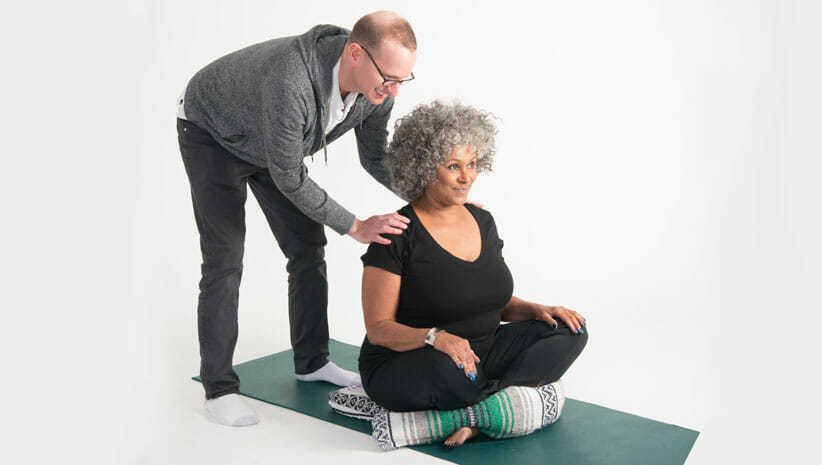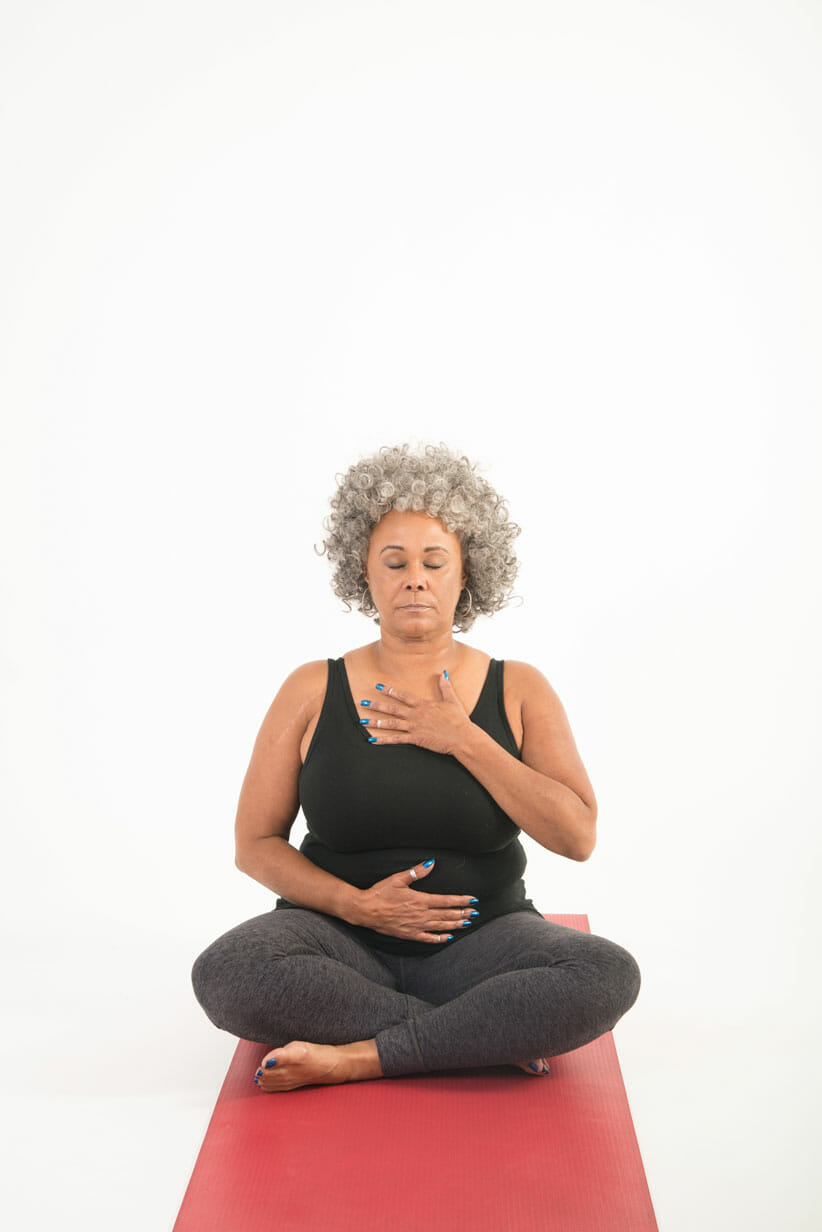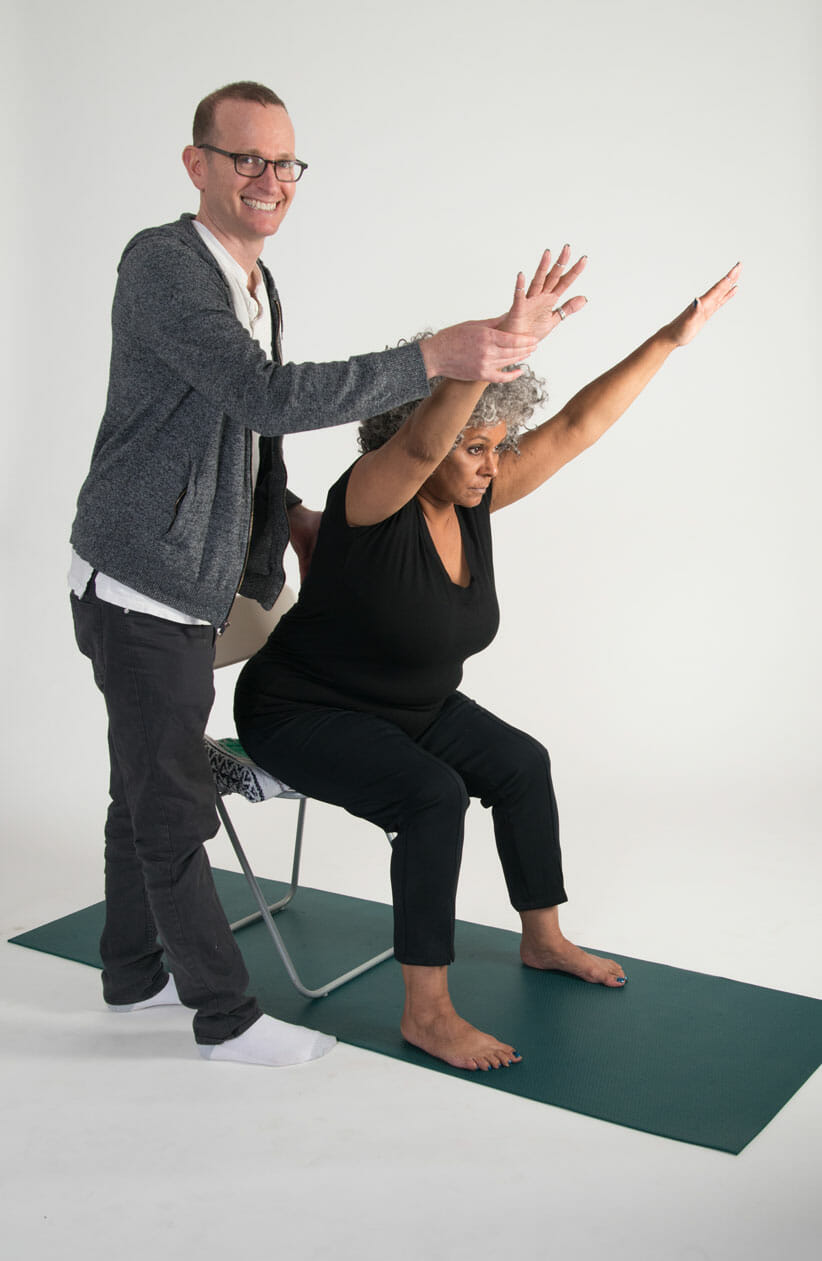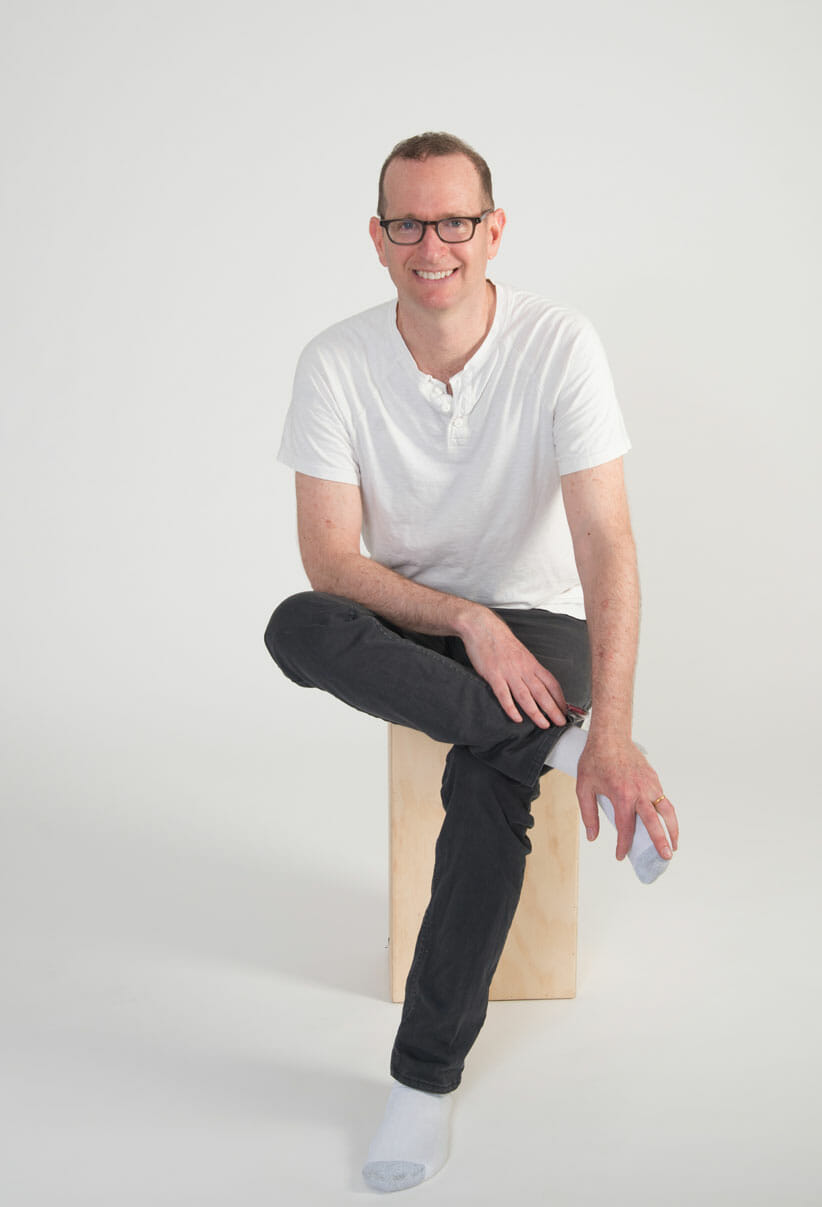
Jivana Heyman and De Jur. Photo by Sarit Rogers Photography
What is Yoga? Are there two Different Yogas?
These days, when I talk to people about yoga, I often wonder if we are all talking about the same thing. It seems like there are two different yogas. One is the physical practice of postural yoga and other is the inner/spiritual practice of classical philosophical yoga.
An outer practice and an inner practice. These two very different conceptions of yoga reflect a divided yoga community, and lead to a contemporary yoga culture that sometimes feels rife with exclusivity and separation. I wonder if a shared understanding of what yoga is could help us to bridge the divide and create a more connected and inclusive yoga culture?

De Jur photographed by Sarit Rogers Photography.
The question, “What is yoga?” is surprisingly difficult to answer. I often ask myself, “What is this mysterious practice that has transfixed me for most of my life?” A practice that is physical and spiritual at the same time. How is it that when I practice and begin to move my body my mind becomes absorbed into the movement and I feel relaxed? How does yoga consistently and constantly bring me back from the dizzying edge of endless circular thinking? How does yoga absorb the darkness and pain?
For me, yoga is more than warriors and dogs, more than trees and dancers, and more than eagles and cobras. Yoga is like glue holding me together. It is breath and energy twisting together into a double helix of being. It’s such a magical and mysterious thing. This physical practice of making shapes with my body (trying to find my inner tree) somehow helps me achieve what the yoga scriptures describe as the goal of the practice: inner peace and self-realization.
The Many Meanings of Yoga
The word “yoga” has more meanings than any other word in Sanskrit, which speaks to what a vast and confusing area of study this is. I realize we usually define yoga as union, but I think there is much more to it than that. To gain a better perspective perhaps we can look back over the time that yoga has been practiced. More than 1,500 years ago, Patanjali explained it succinctly in the four Sanskrit words most commonly tattooed across the chests of yoga practitioners around the world: “yogas chitta vritti nirodha.” Yogic scholar, Seth Powell, translates this phrase as, “Yoga is the stilling of the turnings of the mind.” Or a sweet translation from Linda Sparrowe is, “Yoga is the settling of the mind into stillness.”
Personally, as I’ve sat with those four words over the past three decades, my sense is that we are being called to transcend our limited egocentric vision. My interpretation is, “Calm the mind, free the heart.” Without this perspective we might get lost in believing that yoga is primarily a physical practice.
This is dangerous because it leads to misconstruing advanced asana with advanced yoga, and there is no correlation between physical ability and peace of mind. Will an advanced yoga practitioner be less advanced because of an injury or illness? Or do they lose their so-called “advanced” status as they age if their bodies do not perform the way they did when they were younger?
I remember when I agreed to teach a weekly yoga class at a residential care facility for students with advanced multiple sclerosis about 10 years ago. I arrived to find five students with quadriplegia, who had no mobility at all, and most of whom were not able to speak. At first, I felt overwhelmed and confused about how I could teach them yoga. But eventually, I realized that the only limitations in that class were in my own mind, and that if I really understood what yoga was then I could share it with them.

Jivana Heyman and De Jur. Photo by Sarit Rogers Photography.
The Universal Nature of Yoga Transcends the Physical
That class helped me understand the universal nature of yoga, and how it transcends the physical. My work with Accessible Yoga is often framed in the context of a Westernized view of the practice, with its distinctly ableist perspective. I hear things like, “It’s so generous of you to make these practices accessible to people with disabilities.” Or, “How inspiring it is to see people with disabilities practicing yoga.” These comments come from a misunderstanding about what yoga is, with a focus on asana rather than the context that the asanas exist in. Accessible Yoga is less about the external forms of poses and more about making the heart of yoga accessible.
Discovery in Yoga
So what is yoga? I asked some contemporary practitioners for their definitions. Indian yoga teacher Luvena Una Rangel says, “Yoga is an integration and union of one’s mind, breath and action with everything around – all relationships, beings and matter in mindful presence and oneness.”
Kirtan artist Jacob Duran says, “Yoga is the process, systematized or spontaneous, which dissolves our identification with the transitory self, and uncovers our true identity as Eternal Soul.” This view of yoga says our true identity is Eternal Soul or Spirit and is equal within each of us. We are all complete. Our fullness doesn’t take away from anyone else’s.
A famous verse from one of the earliest Indian scriptures explains it clearly.
om purnam adah purnam idam
purnat purnam udacyate
purnasya purnam adaya
purnam evavasisyate OM
That is full. This is full.
Fullness arises from fullness.
Take away fullness from fullness,
Fullness alone remains.
– Isha Upanishad (500 BCE)
We are all full! Our being is full and complete, and the journey of yoga is to recognize that. If you can’t do a handstand or meditate for an hour, you’re still full. If you have been abused, or if you abused, you’re still full. If you’re sick, anxious, depressed, or suffering, you’re still full. Yoga is a process of remembering that fullness. With this understanding it becomes clear that, by definition, yoga is accessible. It is the most accessible thing of all – our essential Self.
The practice of yoga is about coming to that understanding. Stopping the identification with the limited mind and ego–and connecting with the heart. It’s not an easy thing to do, and it doesn’t have to be perfect. A little asana practice can offer relief from stress, anxiety and depression without having a spiritual context. That means you don’t have to believe in the spirituality of yoga for it to work. But we do have to have a larger vision of what yoga is in order to share it equitably. How many people say they can’t do yoga because they’re not flexible? What does that mean about the way we are portraying and teaching yoga?
How can we bring this awareness into our common understanding of yoga and come to some agreement on what yoga is while still respecting the diversity of experiences in our community? One thing I know about yoga is that, although it seems like a personal practice, it’s actually a community experience. When I turn inward I find you there. In my fullness I find yours.
Definitions of What Yoga Is
According to yoga teacher Marc Settembrino, “Yoga is a set of practices which allow me to observe interconnectedness within my mind and body, and across my community.”
Perhaps some of the following definitions can help us.
Yoga is union
Of the breath, mind and body.
No mat required.
– Myra Rubinstein
Yoga is a practice of awareness of body, breath, and mind leading to self-knowledge in order to be of greater service in the world.
– Priya Wagner
The Shared Vision of the Fullness of Yoga
All of the definitions of yoga speak to the fullness of yoga. Each one describes yoga as a journey toward uncovering our spiritual nature, our essence. When we come together in this more expansive view of the practice, then we create a shared understanding of what yoga is. Once we have this shared vision, we can connect with people of all abilities and backgrounds with equal respect. We can create a community, a sangha, of yoga practitioners that is not based on physical ability but on a love of the practice and a shared goal of finding peace, integration, and fullness in our lives.

Author and Accessible Yoga Founder Jivana Heyman. Photo by Sarit Rogers Photography.
Accessible Yoga Ambassador Photos
Photos of Jivana Heyman and De Jur by Sarit Rogers Photography.
Accessible Yoga
Preorder Jivana Heyman‘s book Accessible Yoga: Poses and Practices for Every Body.
Jivana Heyman is the founder and director of Accessible Yoga, an international non-profit organization dedicated to increasing access to the yoga teachings. Accessible Yoga offers Conferences, Trainings and a popular Ambassador program. He’s the author of the upcoming book, Accessible Yoga: Poses and Practices for Every Body (Shambhala Publications, November 2019), co-owner of the Santa Barbara Yoga Center, and an Integral Yoga Minister. Jivana has specialized in teaching yoga to people with disabilities and out of this work, the Accessible Yoga organization was created to support education, training, and advocacy with the mission of shifting the public perception of yoga.
